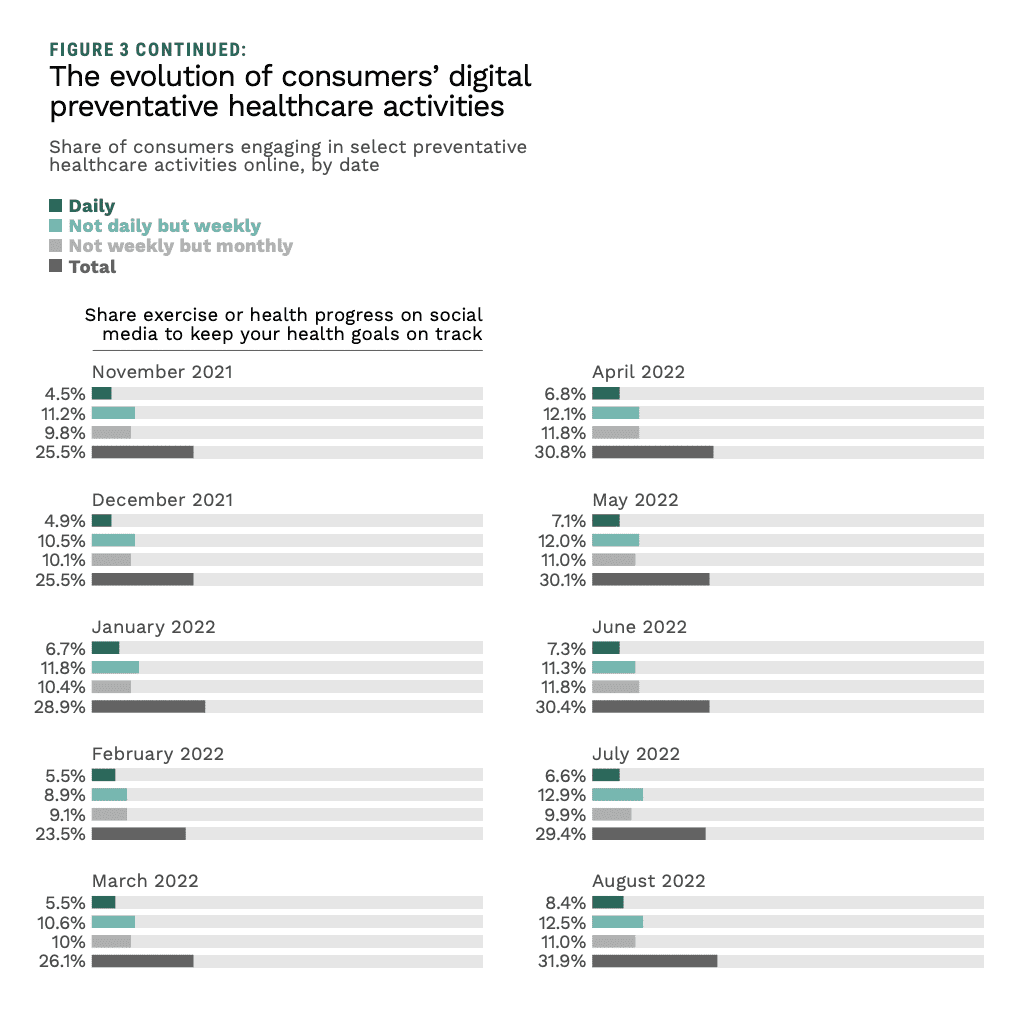
Consumers are getting more comfortable by the quarter with digital wearables that track vital signs and health signals and share them with apps and platforms that help manage health.
Not only is this a good sign for consumer health, but it also signals greater adoption of connected economy dynamics, where engaging in one “pillar” or activity leads to another.
We see this in data from the study “Connected Wellness: What’s Next In The Connected Economy,” a PYMNTS report with research sponsored by CareCredit.
It often takes the form of a user first deciding to track their health data, then deciding to share their fitness progress with friends and family on social media or through a message.
Get Your Copy: Connected Wellness: What’s Next In The Connected Economy
 From this survey of over 3,200 U.S. consumers, we found 57% of them engaged in a preventative healthcare activity online in August. The report noted that “this share has been steadily increasing since November 2021, when 53% engaged in some type of preventative healthcare activity.”
From this survey of over 3,200 U.S. consumers, we found 57% of them engaged in a preventative healthcare activity online in August. The report noted that “this share has been steadily increasing since November 2021, when 53% engaged in some type of preventative healthcare activity.”
Additionally, the increase “signals that roughly 10 million more U.S. consumers are using digital tools to maintain their physical and mental health in August than just nine months prior. In total, 148 million U.S. consumers now use some type of preventative digital healthcare tool.”
We found a sizable percentage of Americans engaging in connected health, with 31% of consumers using sites or apps for mental health in August, up 32% from November 2021, in the fastest growth yet observed in any type of preventative health-related activity.
However, the study stated that “use of wearables like Fitbit, Apple Watch and smart rings is also rising, albeit not at the same blistering pace as mental healthcare apps,” with 43% of consumers using some type of wearable health tech to automatically track, store and analyze health.
Read It Now: Connected Wellness: What’s Next In The Connected Economy